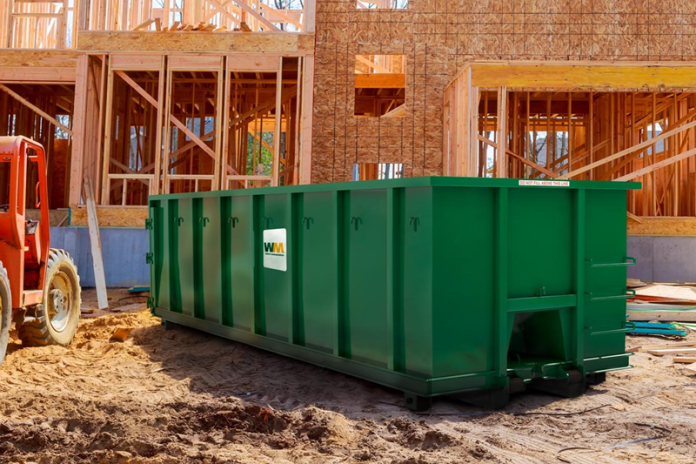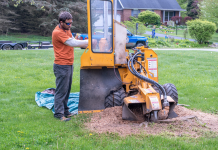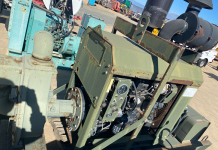So, you’re considering a dumpster rental for your next big project.
Whether you’re cleaning out your garage, renovating your home, or managing a construction site, understanding the right size for your dumpster rental is crucial.
Let’s dive into how to size your dumpster for different types of projects.
Understanding Dumpster Sizes
Dumpster sizes vary significantly, and selecting the right one can save you time and money.
The most common sizes are 10, 20, 30, and 40-yard dumpsters.
Each size has its own specific use cases.
10-Yard Dumpsters
Perfect for small cleanouts and minor renovations.
A 10-yard dumpster is about the size of a parking space.
Ideal for basement cleanouts, small deck removals, or disposing of heavy materials like concrete.
20-Yard Dumpsters
This is the most popular size for medium-sized projects.
Think kitchen remodels, large basement cleanouts, or roofing projects.
It’s large enough to handle bulky items but still fits comfortably in most driveways.
30-Yard Dumpsters
For larger projects, a 30-yard dumpster is a great choice.
It’s often used for major home renovations or construction sites.
Can handle large quantities of debris without requiring frequent pickups.
40-Yard Dumpsters
The big daddy of dumpsters.
Used for the largest projects like new home constructions or extensive commercial cleanouts.
This size can handle the most considerable amount of waste, but make sure you have the space for it.
Choosing the Right Size for Your Project
Now that you understand the different sizes, how do you choose the right one?
Let’s break it down by project type.
Home Cleanouts
When I first decided to declutter my home, I underestimated how much junk I had accumulated.
Starting with a small 10-yard dumpster seemed like a good idea.
However, halfway through, I realized I needed a 20-yard dumpster instead.
From old furniture to boxes of forgotten items, it quickly filled up.
Lesson learned: Always account for more space than you think you need.
Renovation Projects
For my kitchen remodel, I opted for a 20-yard dumpster.
It was the perfect size for tearing out old cabinets, countertops, and flooring.
If you’re planning a similar renovation, this size will likely suit your needs.
But, if you’re renovating multiple rooms or doing a large-scale remodel, consider upgrading to a 30-yard dumpster.
Construction Sites
Managing a construction site comes with its own set of challenges.
When we built our new office space, we used a 40-yard dumpster.
Between the drywall, wood scraps, and other construction debris, the large size was essential.
If you’re working on a smaller construction project, a 30-yard dumpster might suffice.
Tips for Maximizing Your Dumpster Space
Maximizing your dumpster space can save you money and hassle.
Here are a few tips to make the most out of your rental.
Break Down Large Items
Breaking down large items can save a significant amount of space.
For example, disassemble furniture and flatten boxes before tossing them in.
Load Evenly
Distribute the weight evenly to avoid overloading one side.
This ensures safe transportation and helps you use the entire space efficiently.
Recycle When Possible
Before you toss everything into the dumpster, consider recycling.
Materials like metal, cardboard, and certain plastics can often be recycled, reducing the amount of waste.
Understanding Dumpster Rental Costs
The cost of a dumpster rental can vary based on several factors.
Size and Duration
The size of the dumpster and the length of the rental period are primary cost drivers.
Larger dumpsters and longer rentals will naturally cost more.
Location
Your location also affects the cost.
Urban areas may have higher rental rates due to demand and disposal fees.
Type of Debris
The type of debris you’re disposing of can impact the price.
Heavy materials like concrete may incur additional fees.
Real-Life Dumpster Rental Experience
When I was in the process of renovating my house, I opted for a 30-yard dumpster rental.
It was a sizable project, involving the removal of old flooring, cabinets, and even a few walls.
The convenience of having a dumpster on-site was invaluable.
No more trips to the dump, no more piling up trash in the yard.
Everything went straight into the dumpster, keeping the worksite clean and safe.
One important lesson I learned was to communicate clearly with the rental company about what I was disposing of.
Certain items, like electronics and hazardous materials, required special handling and couldn’t just be thrown into the dumpster.
Being upfront about these details helped avoid any additional fees or complications.
Environmental Considerations
Dumpster rentals can have an environmental impact, but there are ways to minimize it.
Responsible Disposal
Ensure your rental company disposes of waste responsibly.
Many companies partner with recycling facilities to divert waste from landfills.
Reducing Waste
Plan your project to minimize waste.
Reuse materials when possible and opt for sustainable practices.
Final Thoughts on Dumpster Rentals
Choosing the right dumpster rental size is essential for the success of your project.
From small home cleanouts to large construction sites, there’s a dumpster that fits your needs.
Remember to plan ahead, maximize your space, and consider the environmental impact of your waste disposal.




